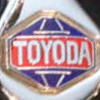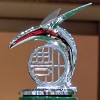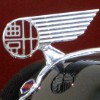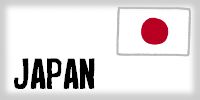 |
 |
 |
 |
 |
|
1935~
|
1935~
|
1936~
|
1936~
|
1989~
|
 |
|
|
|
|
|
2009~
|
|
|
|
|
【 Origin of Emblem and Logo 】
The overlapping of the two perpendicular ovals inside the outer oval symbolize "T" for TOYOTA. The outer oval symbolizes the world embracing TOYOTA. The space in the background within the emblem logo exhibits the "infinite values" which TOYOTA conveys to its customers: superb quality, value beyond expectation, joy of driving, innovation and integrity in safety, the environment and social responsibility.
【 History of Emblem, Logo, and Company 】
The history of TOYOTA began in September 1933 when the automobile department was established within Toyota Industries Corporation. In August 1935, the G1 truck was born as the first mass-produced truck. The G1 truck was equipped with the Shachihoko bonnet mascot and the TOYODA emblem logo. In April 1936, the Model AA was born as the first mass-produced passenger car. The Model AA was equipped with the wing bonnet mascot and the TOYODA emblem logo.
In the summer of 1936, the company name was changed from "TOYODA" to "TOYOTA" due to a public competition. The AB Phaeton, announced in September 1936, was equipped with the Japanese katakana letters "TOYOTA" emblem logo.
In August 1937, the automobile department of Toyota Industries Corporation moved from Kariya-cho to Koromo-cho, and Toyota Motor Company was established.
During the second Sino-Japanese War and the World War II, Toyota Motor Company mainly produced trucks and passenger cars. Tokai Aviation Industries was founded as a joint venture between the Toyota Motor Company and Kawasaki Aircraft Industries to produce aircraft engines. Tokai Aviation Industries is the predecessor of Aisin Corporation.
In 1950 after the World War II, the experience of the business crisis laid the foundation for the Toyota Production System. For example, the concept of Kaizen, Lean manufacturing, the kanban methodology, and so on.
After 1955, various car model emblem logos such as the crown design and the corona design have been born. The culture of adopting original design for each model continues to this day.
In July 1982, Toyota Motor Company and Toyota Motor Sales merged to form Toyota Motor Corporation. It is abbreviated as "TMC" within the Toyota Group.
In 1989, the luxury brand "Lexus" was launched. In the same year, the current TOYOTA emblem logo was born. The new design was advertised with a catch phrase "The new TOYOTA will start running", and the new emblem logo was installed from the first-generation CELSIOR. In 2009, the third-generation PRIUS was released. It was the first car to be equipped with the heat blue design exclusively for hybrid vehicles.
In 2008, TOYOTA fell into the red for the first time in 58 years due to the Lehman shock. However, the TOYOTA Group sold 8,972,000 units, making it the world's number one for the first time. The sharp drop in GM sales helped Toyota become the number one in the world.
In 2015, the vehicle development policy "TNGA (Toyota New Global Architecture)" was introduced. Significant cost reductions have been achieved by standardizing and modularizing platforms, engine parts and so on.
In 2017, the sports car brand "GR" was born. GR stands for "GAZOO Racing", and its predecessor is the sports car brand "G's", which was born in 2010.
|
















 English -
English - 




